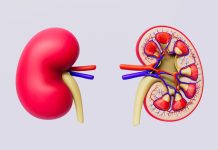
Type 2 diabetes is a prevalent chronic health condition that affects millions of people worldwide. It occurs when the body becomes resistant to insulin or when the pancreas is unable to produce enough insulin.
This leads to high blood sugar levels, which can cause a range of health issues over time.
Understanding the common causes of type 2 diabetes is crucial for prevention and management.
Here’s an easy-to-understand review of the factors that contribute to the development of this disease.
Genetics and Family History
One of the most significant risk factors for type 2 diabetes is genetics. If you have a parent or sibling with diabetes, your risk of developing the condition is substantially higher.
Researchers have identified various genes associated with insulin resistance and beta-cell function (the cells in the pancreas that produce insulin). While genetics set the stage for diabetes, they don’t guarantee you’ll develop the condition, which is where environmental and lifestyle factors come into play.
Weight and Body Composition
Being overweight is a primary risk factor for developing type 2 diabetes. Excess body fat, especially when stored around the abdomen, can increase the body’s resistance to insulin.
However, it’s not just the amount of fat but also the location and type of fat that matters. Belly fat is more hormonally active, releasing compounds that may impair glucose metabolism and increase insulin resistance.
Physical Inactivity
A sedentary lifestyle is another major risk factor for type 2 diabetes. Regular physical activity helps control weight, uses up glucose as energy, and makes cells more sensitive to insulin.
Studies show that moderate exercise, such as brisk walking for 30 minutes daily, significantly reduces the risk of developing diabetes.
Dietary Factors
What you eat plays a significant role in the risk of developing type 2 diabetes. High intake of red meat, processed foods, high-fat dairy products, and sweets can increase the risk, while a diet rich in fruits, vegetables, whole grains, and nuts is protective against the disease.
Soft drinks and other sugar-sweetened beverages are particularly harmful because they lead to spikes in blood sugar and insulin levels.
Age and Ethnicity
The risk of type 2 diabetes increases with age. This is often associated with increasing weight, less physical activity, and muscle loss as people get older.
Certain ethnic groups, including African Americans, Hispanic Americans, Native Americans, and some Asian Americans, are at a higher risk for type 2 diabetes, suggesting that genetic factors play a role in these populations.
Insulin Resistance
Insulin resistance is a hallmark of type 2 diabetes. It occurs when cells in muscles, fat, and the liver start resisting or ignoring the signal that insulin is trying to send out—which is to grab glucose out of the bloodstream and put it into our cells.
Over time, higher and higher amounts of insulin are required to help glucose enter cells. This insulin resistance not only contributes to elevated blood glucose levels but also increases the risk of hypertension and heart disease.
Hormonal Changes
Certain hormonal diseases like polycystic ovary syndrome (PCOS) also increase the risk of developing diabetes due to the inherent insulin resistance associated with these conditions.
Moreover, the changes in insulin production and sensitivity during pregnancy can lead to gestational diabetes, which also increases the risk of developing type 2 diabetes later.
Sleep Patterns
Recent research has linked poor sleep patterns, such as short sleep durations and sleep apnea, to an increased risk of insulin resistance. Sleep affects the release of hormones that play a key role in glucose metabolism and can lead to weight gain, another risk factor for diabetes.
In conclusion, type 2 diabetes results from a complex interplay of genetic, lifestyle, and environmental factors.
By understanding these influences, individuals can take proactive steps to reduce their risk through lifestyle changes like improving diet, increasing physical activity, managing weight, and enhancing sleep quality.
Recognizing these factors not only helps in prevention but also assists those already diagnosed with diabetes in managing their condition more effectively.
If you care about diabetes, please read studies about a cure for type 2 diabetes, and these vegetables could protect against kidney damage in diabetes.
For more information about diabetes, please see recent studies about bone drug that could lower risk of type 2 diabetes, and results showing eating more eggs linked to higher risk of type 2 diabetes.
Copyright © 2024 Knowridge Science Report. All rights reserved.



